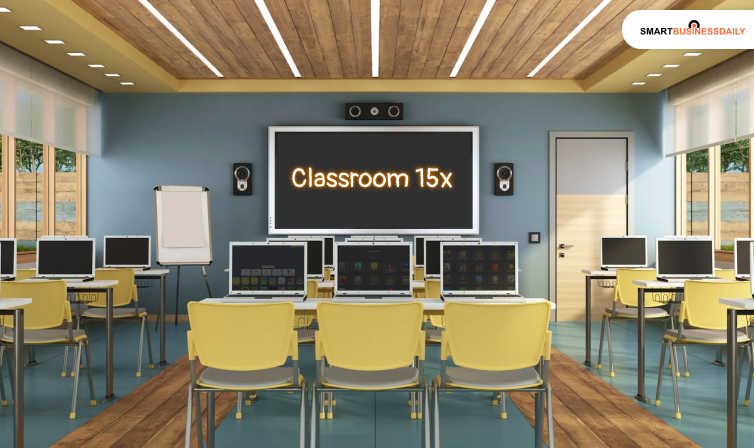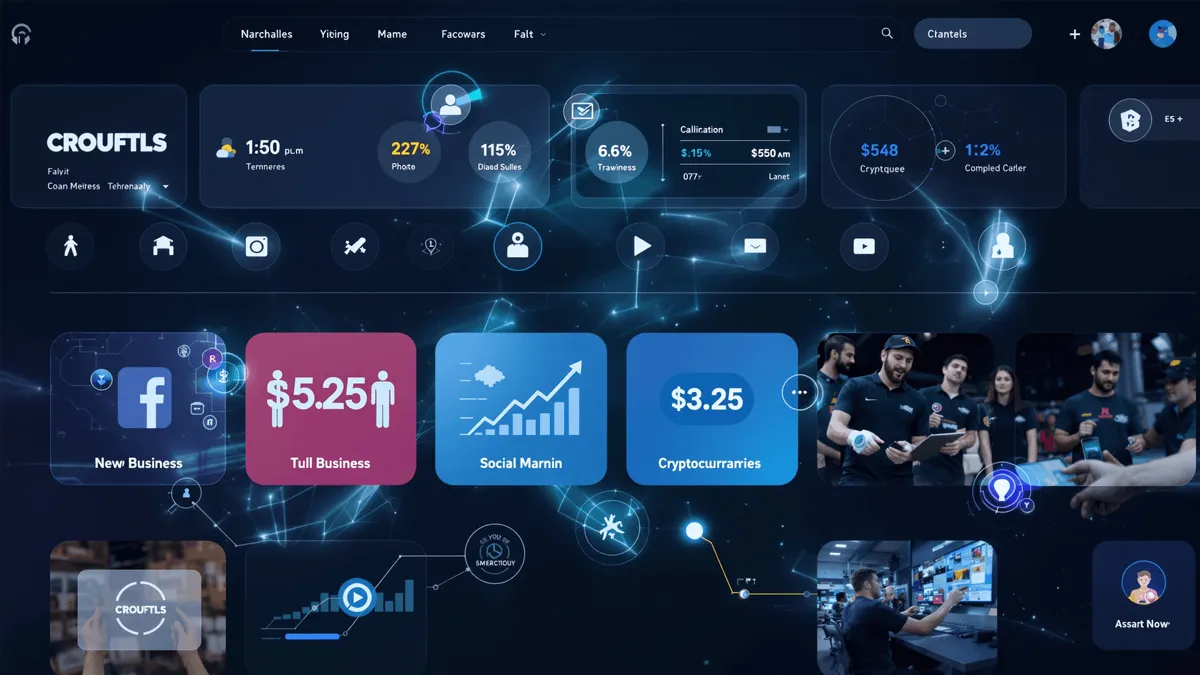Introduction to Classroom 15x
Classroom 15x The classroom has always been the central hub of education, the space where minds meet ideas and knowledge takes shape. Yet, for decades, the structure of that space has remained relatively unchanged—rows of desks, a teacher at the front, a blackboard or whiteboard, and a schedule dictating when one subject ends and another begins. Classroom 15x is a bold departure from this model, symbolizing a reimagining of the physical, technological, and cultural framework of learning. The “15x” is not just a number; it represents multiplied possibilities, expanded engagement, and a commitment to making the learning environment more adaptable, interactive, and student-focused than ever before. It is an embodiment of the belief that learning spaces should grow in complexity and richness to meet the needs of the modern world.
The Meaning Behind the 15x Concept
The idea of Classroom 15x is not about enlarging the physical space fifteen times over; rather, it is about multiplying the effectiveness and versatility of the classroom. The “x” signifies an exponential increase in opportunities for engagement, creativity, and collaboration. In a traditional classroom, learning is often one-directional: the teacher delivers knowledge, and students receive it. In a 15x environment, learning flows in multiple directions—teacher to student, student to student, and student back to teacher—creating an ecosystem where knowledge is built collectively. The concept embraces the idea that the classroom can be a place of exploration, where technology, flexible design, and innovative pedagogy converge to amplify learning outcomes.
A Space Designed for Adaptability
When you step into a Classroom 15x the first thing you notice is its flexibility. The physical space is designed to adapt instantly to different teaching and learning scenarios. Instead of rows of fixed desks, there are modular tables and chairs that can be arranged in clusters for group work, aligned for presentations, or set apart for quiet, individual study. There are open areas for movement-based activities, cozy corners for reflection, and technology hubs where students can engage in research or digital projects. Lighting, acoustics, and temperature control are all carefully considered to create a comfortable environment that supports concentration and reduces fatigue. The adaptability of the space mirrors the adaptability expected in learning—ready to pivot, experiment, and evolve as needed.
Technology as a Natural Extension of Learning
Technology in Classroom 15x is not an intrusive gadget but a seamless extension of the learning process. Interactive digital boards replace static displays, allowing students to manipulate information, visualize concepts, and collaborate on shared projects in real time. Personal devices such as tablets and laptops are integrated into lesson plans to give students access to a world of resources and tools. Augmented reality can transport students to ancient civilizations, while virtual reality simulations allow them to explore scientific phenomena in immersive detail. Importantly, the technology is used with purpose—it enhances understanding rather than distracting from it. Teachers are not merely operators of these tools but designers of experiences that integrate digital resources with human interaction.
Rethinking Pedagogy for the 15x Era
The pedagogical shift in Classroom 15x is as significant as its physical and technological transformation. Here, teaching moves from being a performance at the front of the room to a facilitation process that happens throughout the space. The teacher becomes a guide, mentor, and co-learner, helping students navigate projects, pose challenging questions, and reflect on their learning journey. Lessons are personalized, often supported by adaptive learning software that adjusts the pace and complexity based on student progress. Assessment is ongoing and feedback is immediate, encouraging students to take ownership of their development. The classroom becomes a workshop of ideas rather than a hall of instruction, with active participation replacing passive reception.
Building a Culture of Collaboration
One of the defining qualities of Classroom 15x is its focus on collaboration. Students are encouraged to work together, combining their diverse strengths to solve problems and create new ideas. The physical layout supports this with areas dedicated to teamwork, but collaboration is also embedded in the classroom culture. Teachers facilitate group dynamics, ensuring that every voice is heard and valued. Students learn to negotiate, compromise, and build consensus, gaining skills that extend far beyond academic achievement. In this environment, learning becomes a social act, enriched by the perspectives and experiences of others.
Inclusivity and Universal Design
Inclusivity is not an optional feature in Classroom 15x—it is foundational. The space is designed using principles of universal design so that all students, regardless of ability, can participate fully. Furniture is adjustable, technology is accessible, and materials are provided in multiple formats to cater to different learning needs. Teachers are trained to use culturally responsive teaching strategies that respect and incorporate students’ backgrounds and experiences. This inclusivity extends beyond physical accessibility to creating an emotional climate where students feel safe to express themselves and take risks in their learning. The result is a classroom where diversity is seen as a strength and every learner is supported in achieving their potential.
Extending Learning Beyond Four Walls
In Classroom 15x learning is not confined to the space itself. The integration of cloud-based tools and online platforms allows students to continue their projects, discussions, and research from home or any other location. The classroom serves as a launchpad for real-world engagement, with community partnerships, field experiences, and global collaborations woven into the curriculum. A history lesson might lead to interviews with local historians, while a science project could connect students with researchers in another country. This approach reinforces the relevance of what is learned in the classroom and shows students how their knowledge can be applied beyond school.
Overcoming the Challenges of Transformation
Transforming a traditional classroom into a Classroom 15x comes with challenges. Financial investment is often the first hurdle—technology, flexible furniture, and training require funding. There is also the challenge of mindset, as both teachers and students must adapt to new ways of working. Teachers may need extensive professional development to feel comfortable in a facilitative role, and students who are accustomed to passive learning may initially struggle with greater responsibility. Furthermore, equitable access to technology must be ensured so that the benefits of the model are shared by all. Addressing these challenges requires careful planning, strong leadership, and a commitment to continuous improvement.
Early Signs of Success
Schools that have piloted Classroom 15x designs are already reporting positive outcomes. Engagement levels rise when students have more control over their learning environment and methods. Collaboration becomes more authentic, with students contributing ideas that are richer and more varied. In many cases, academic performance improves, particularly in areas where active, hands-on learning is emphasized. Teachers report greater job satisfaction as they see students taking initiative and demonstrating creativity. These successes suggest that the principles of Classroom 15x can be adapted to a wide range of educational settings and can have a meaningful impact on both teaching and learning.
Looking Ahead: The Future of Classroom 15x
The future of Classroom 15x is filled with possibilities. As technology advances, new tools will emerge to make learning even more interactive and personalized. Artificial intelligence could provide real-time learning analytics, helping teachers tailor instruction on the fly. Global networks of Classroom 15x spaces could connect students from different cultures, allowing them to collaborate on projects that address shared challenges such as climate change or public health. The physical design may also evolve, with entire schools built around the principles of flexibility, adaptability, and inclusivity. The concept has the potential to influence not just individual classrooms but the broader structure of educational systems.
A New Paradigm for Learning
Ultimately, Classroom 15x represents more than a set of design choices or technological upgrades—it is a new paradigm for learning. It challenges the assumption that classrooms must be static, one-size-fits-all environments. Instead, it embraces change, diversity, and complexity, preparing students for a future that demands adaptability, creativity, and collaboration. The model recognizes that the space in which learning occurs profoundly affects how learning happens, and it uses that insight to create environments that are as dynamic as the learners themselves.
Conclusion
Classroom 15x is an invitation to rethink everything we know about educational spaces. It merges physical design, technology, pedagogy, and inclusivity into a cohesive vision that multiplies the potential of the learning experience. While challenges remain in implementation, the model offers a compelling glimpse of what education could be when we prioritize flexibility, collaboration, and student empowerment. As more schools explore and adapt the principles of Classroom 15x, we may see a transformation not only in how classrooms look but in how learning feels—and in the futures we prepare our students to create.




